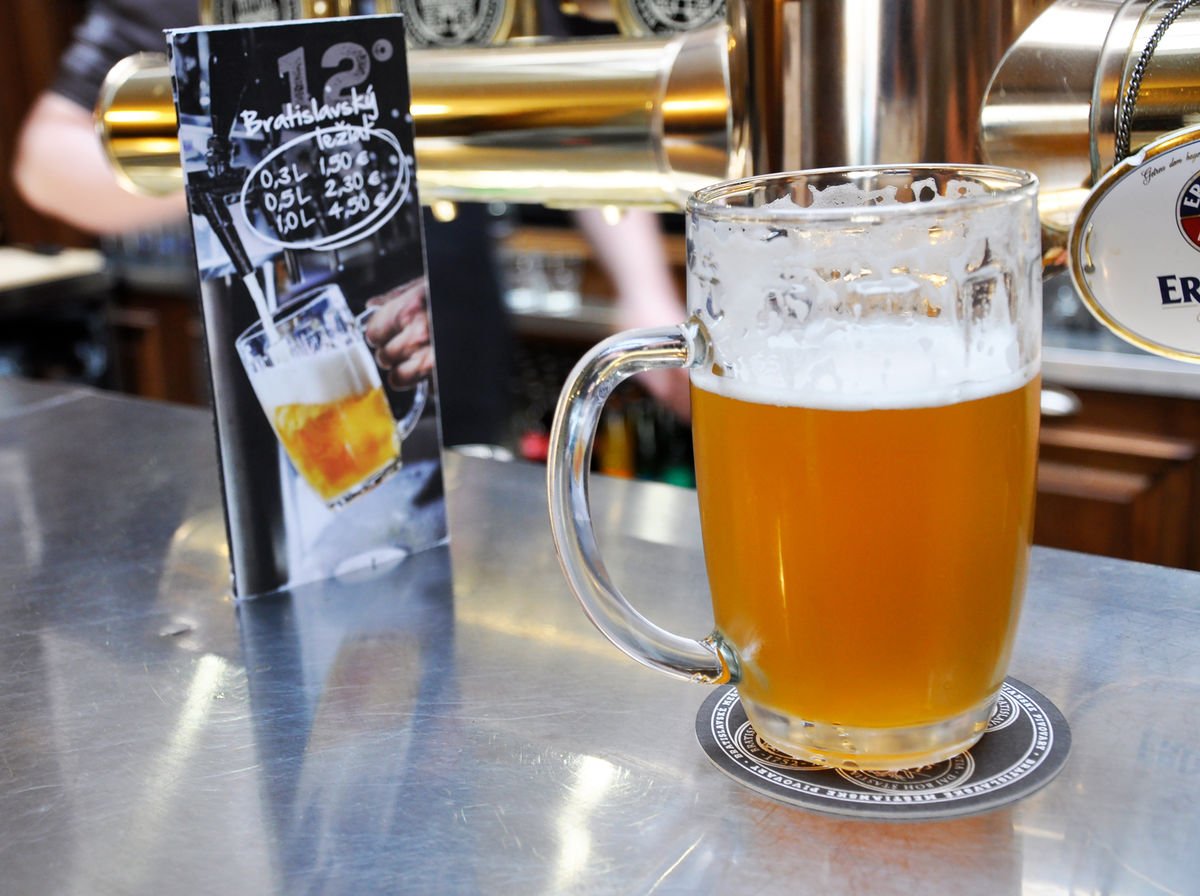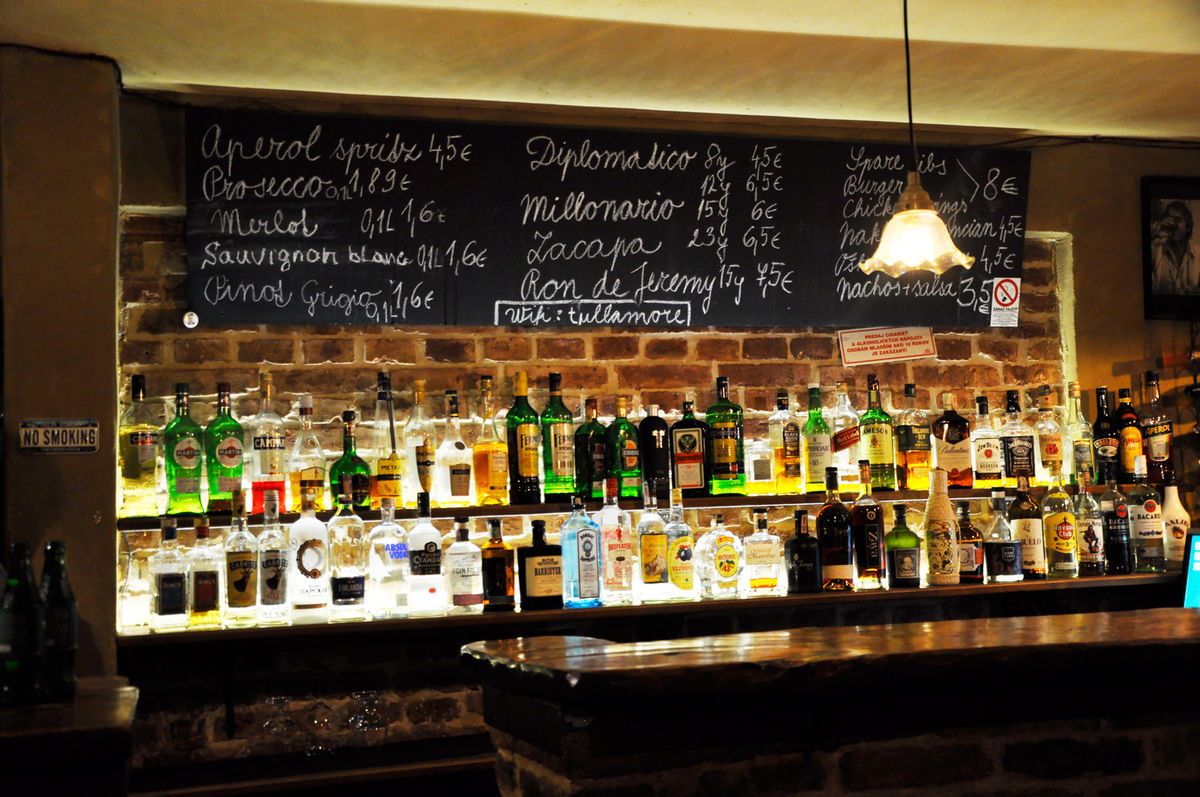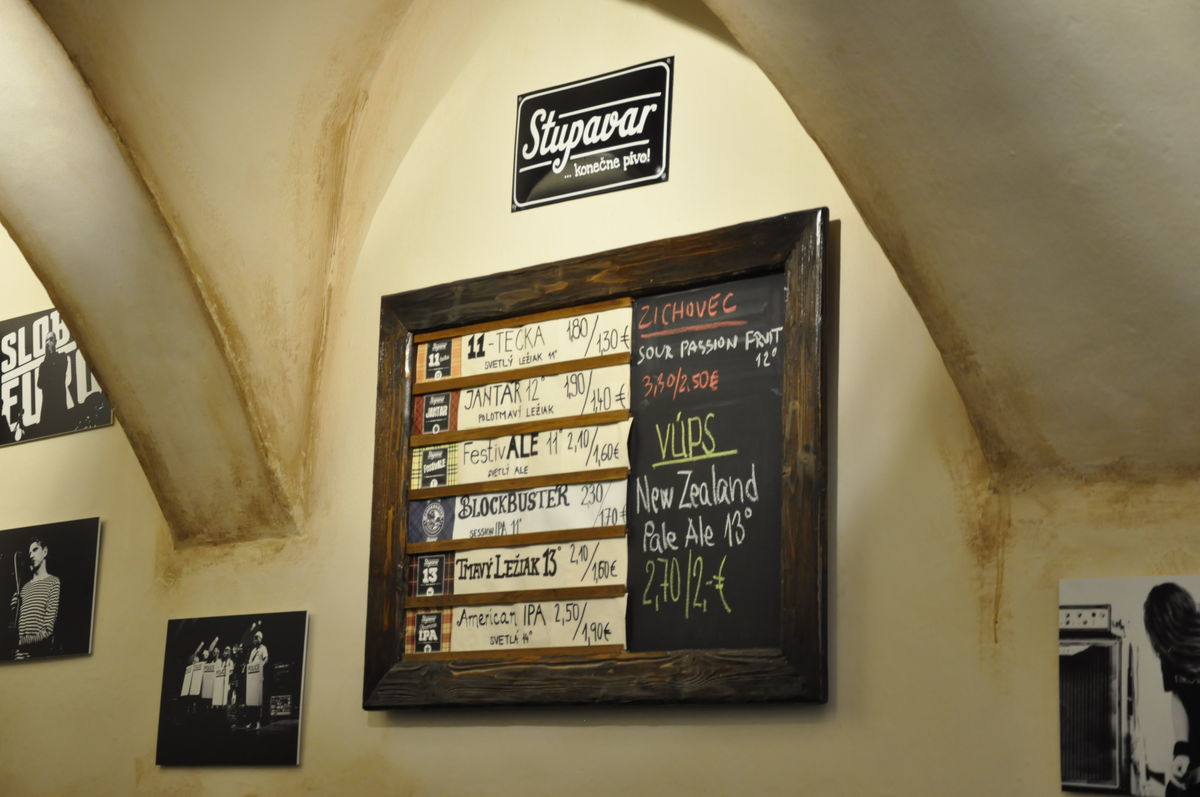Start 14-Day Trial Subscription
*No credit card required

A Bratislava Beer Tour
“Where the hell is Bratislava?”
Mention you plan to visit Bratislava for a beer tour, and this is probably the least vulgar response you will get. As Austrian statesman Klemens von Metternich said in 1820: “East of Vienna, the Orient begins,” which put Bratislava into a space as mystical as Mongolia to the population of Western Europe. Even my friend Rudy, a world-traveler with 60+ countries on his passport, could not recall ever hearing of the quaint city on the Slovakian side of the Danube River, across from Austria.
At best, most imagined Bratislava as a hinterland, with boring Communist-era architecture and ambivalent hotel and restaurant staff; at worst, recollections of kitschy scenes from the 2004 movie EuroTrip fill the void. “Welcome to Bratislava!” one character exclaimed, “Miami Vice is number 1 new show!”
It’s that misunderstood.
In any case, perhaps Bratislava is alien simply because the city is called so many different things: Pressburg (German), Pozsony (Hungarian) and Prešporok (Slovakian) among the many names. Bratislava was even called Wilsonovo mesto in 1918-19, in honor of U.S. President Woodrow Wilson, who shared a view with some Bratislavans regarding a right to Slovakian self-determination.
Fast forward 100 years from Wilsonovo and Bratislava is now a thriving metropolitan area of more than 600,000 people, including more than 60,000 students, thanks to an enterprising younger generation and economic integration in the EU. Bratislava, Slovakia has emerged from centuries of rule by empires to stand on its own among well-known Danubian neighbors, Vienna (80 km west) and Budapest (200 km southeast).
For a beer tourist, the meandering, cobblestone streets of Bratislava are a delight of discovery. Far less crowded than similar districts in Prague or Budapest, the quiet streets and manageable squares are lined with wrought-iron balconies and painted in soft pastel shades, offering a sublime auditory and visual experience to go along with the quirky, post-socialist quality of the pubs. Only a city comfortable in its skin offers such a balance. As a bonus, the prices of beer, accommodations and meals all average half the cost of Vienna.

For a beer tourist, the meandering, cobblestone streets of Bratislava are a delight of discovery. Far less crowded than similar districts in Prague or Budapest, the quiet streets and manageable squares are lined with wrought-iron balconies and painted in soft pastel shades, offering a sublime auditory and visual experience to go along with the quirky, post-socialist quality of the pubs.
“We’re a pretty alcoholic country,” remarked my guide and guest for the first evening, Kristina Masaryk, a native Bratislavian. The stats back up the claim: Slovakia is one of the 10 booziest nations in the world according to the WHO, guzzling 14 liters of pure alcohol per year. Yet Slovakians consume much less beer than neighboring Czech Republic and Austria.
Then again, so does everyone else: Czechia and Austria are #1 and #3 in world beer consumption per capita, respectively (knowing #2 is Namibia will win Double Jeopardy). Slovakians, conversely, tend to spread alcohol consumption between wine, beer and spirits. Nevertheless, the average Slovakian swills 80 liters of suds per year, well above the U.S. average of 75. The difference between neighbors is mainly because wine had such a head start, having a history dating back to a 1st century Roman settlement. The oldest brewery in the country, in Vyhne, doesn’t appear until the middle of the 15th century 1,300 years later.
When the wave of brewery consolidation ended with the Communist era of the mid-90s, Slovakia has erupted into a spasm of new breweries, going from just 10 small craft breweries in 2009 to more than 80 in 2017. “Each year, at least 8-10 new small breweries open in Slovakia, with many in Bratislava,” said Ján Smoleň, assistant professor and beer aficionado at Comenius University in Bratislava. “It’s a real revolution.”
Any tour of Bratislava, including beer, should begin in the city’s main square, Hlavné Námestie. While some cities spent lavishly on museums, Bratislava smartly made the entire Old Town a welcoming artifact, embedded (literally) with history: a keen eye can spot the cannonball fired by Napoleon’s army still lodged in the town hall. In the spring and summer, the area is filled with small kiosks, restaurants and interesting shops. In the winter a Christmas market lights the square in mystical yellow. Bratislava has spent millions refurnishing this district since 1989with cobblestone streets closed to auto traffic, perfect for a meandering beer tour.
Like the architecture and infrastructure, beer quality has also improved. The two main conglomerate brewers, Heineken International (producing Zlaty Bazant, Corgon, and Kelt beer) and Topvar/SABMiller (Saris and Smadny Mnich), make up 73% of the beer sales. Despite the domination, the corporate brewers brought sorely needed investments into Slovakia including hundreds of millions for production equipment, technology and quality controls.
The impact of these investments shows as the beer community has matured. Unlike neighboring Hungary, 85% of the ingredients in even big-brand beers are sourced in Slovakia. “Our beer’s secret is not just in the high quality of ingredients,” Smoleň said. “It also comes from our quality water, grain, hops and yeast as well as our mastery of craft beer.” The result is a well-defined lager style (a style that accounts for 66% of all beer consumed in the city) with a crisp, polished finish.
Before the drinking can commence, however, we decide to stop for an early brunch. Besides beer and architecture, Bratislava excels at the most underrated meal of the day: breakfast. Old town is littered with fantastic cafes, but a favorite is Mondieu Panská, where a sumptuous organic brioche topped with egg and lardons and an artistic cappuccino only sets you back $10.

Any tour of Bratislava, including beer, should begin in the city’s main square, Hlavné Námestie. While some cities spent lavishly on museums, Bratislava smartly made the entire Old Town a welcoming artifact, embedded (literally) with history: a keen eye can spot the cannonball fired by Napoleon’s army still lodged in the town hall.
A short walk from Mondieu sits ground zero for Bratislava craft suds: 100 Pív. Opened in 2005, 100 Pív has 100 (hence the name) different regional bottled beers and Slovakian craft on tap. Even the most experienced beer gourmet will find a gem. Draft is a rotating selection from Slovakian gypsy breweries like Hellstork and Be Unorthodox. Take note that the pub is small, so don’t be surprised or shy about sharing a table. Confused by all of the offerings? Ask the owner, a hulking, can’t-miss figure who always wears black.
Moreover, pubs like 100 Pív and Craft B33R Gallery, and the pivovars owned by a small brewer, are the only way Bratislavians can experience craft beer. “In Slovakia, you can’t get craft beer in a supermarket at all,” explained Daniela Adamcova, our beer guide from Taste Bratislava. “It’s not a law, it is more the influence of cost, but that is slowly changing.” Since 67% of beer sales in the country happen in supermarkets, availability is a big problem for craft brewers, but also a big opportunity. Some gypsy brewers, like Be Unorthodox, are known for attempting interesting, expansive beers (we sampled Blood River, a 5.8% lager that tasted more like a farmhouse ale thanks to the addition of rooibos tea). Most, however, need to stick to what sells, making partnerships batches between brewers quite common. “Craft beer, to most in Slovakia, simply means unfiltered and unpasteurized beer,” Daniela explained.
Without exception, every visit to Bratislava should include Papichulo, in the Starý Ružinov district and a short tram or taxi ride from Old Town. Papichulo’s is, quite literally, underground -- the bar takes advantage of the space formerly occupied by a small park’s public toilets under street level. Quirky art and recycled materials line the walls, filled with gaudy Baroque gold mirrors and flea market finds (an old diver’s helmet sparked a conversation of the bar of how to turn the headgear into a bong). The floor is filled with comfortable and faded recycled furniture, floral patterns conveying its original home in a grandmother’s lounge. A solid list of 8-10 local craft brews helped us pass the three-hour happy hour (!) easily, while sitting on the terrace in the park around the bar entrance. This is a local’s kind of place but take note: the bar does not open until 5 pm.
A short walk from Papichulo sits the opposite end of the Bratislavian drinking spectrum: the accurately-named Slovak Pub, a meandering 11-room experience built around a 150-year-old cottage with the beer brewed on premises in the basement. The wide-planked wood floor is dark brown and insanely uneven, worn and colored from the boots of untold thousands of locals who meet here daily for the fantastic house lager at $1.75 per half-liter. Each room of Slovak Pub is designed around an era of Slovakian history, with the main large cottage hall (Štúr's Room) festooned with weathered paintings honoring intellectuals who codified the Slovak language in the 1800s, leading to a renewed patriotism and shared history for the country.
Being a jaded beer writer, I’ve had (too many) beers in soulless hip-tech tap houses and soulless gastropubs. Not Slovak Pub. This is a place made comfortable with a delicious lassitude. Besides the smooth, crisp beers on tap, foodies will love knowing the ingredients (including the must-have bryndzové halušky - boiled potato dough with the consistency of gnocchi, sprinkled with perfectly-crisp bits of lardons) originate on the pub’s own local farm.
With great beer and food comes notoriety, so stories of Bratislava bacchanalia from tourists are increasingly common. Staggers (stag partiers), especially those from Western Europe looking to take advantage of cheap drinks and kitschy hotels, sometimes rove through the city, treating the pub districts as a Euro-Vegas. Give thanks to cheap regional flights and easy border crossings. But unlike Vegas, the castles and walls are in Budapest original, and if the residents seem indifferent to the noise, it’s mainly because they’ve seen far worse, and consider the weekenders lightweights. “People come here from the UK and France all the time and drink and party and make fools,” the bartender at Meštiansky pivovar tells me. “We just step right over them on the sidewalk. You made your bed, now you sleep there, as they say.”
Yet these scenes are rare, especially compared to nearby Vienna and Budapest. “Slovakia should be promoted as a beer country, since we have such a long history of excellent beer-making.” Daniela explained.
Until that happens, Bratislava might just be the best kept secret in the Orient.

Photos Courtesy Bryan Cohen




Comments